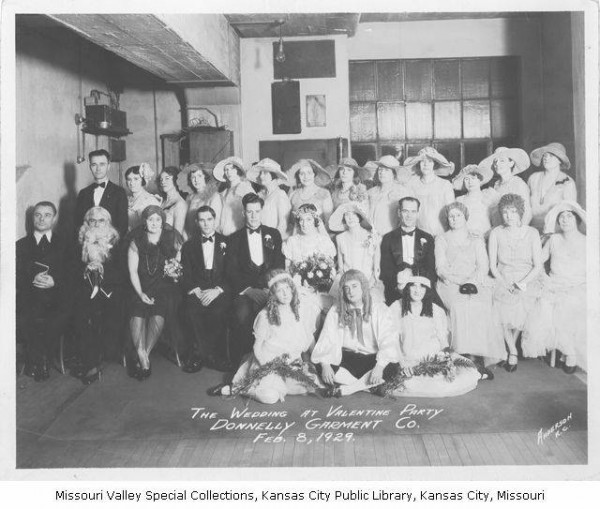Historic Garment District Museum
UPDATE, Sept 28, 2016: Last year the Historic Garment District Museum of Kansas city became part of the Kansas City Museum. Tours are now free!
In the mid-20th century, one in every seven U.S. women owned a coat, a hat or a dress made in Kansas City. The garment industry was Kansas City’s second largest after meatpacking, and during its heyday between World War I and the Vietnam War, it employed 4,000 to 7,000 people, many of them recent immigrants to America. The Historic Garment District Museum, located in an old dry goods warehouse at 8th Street and Broadway, tells the story of the neighborhood and its contribution to American culture.
At the end of the 19th century, the distribution of wholesale dry goods such as textiles and ready-to-wear clothing, as well as buttons, hats and accessories, moved from the West Bottoms to the area now known as the Garment District, stretching from 6th to 10th Streets and Washington to Wyandotte Streets. By 1918, many of the warehouses had become factories, and the industry took off. Kansas City’s distribution area stretched from Missouri to the Pacific coast, stocking mom-and-pop clothing stores in towns and cities throughout the West.
The museum occupies the former office area of what used to be Poindexter Dry Goods, built in 1901. It wasn’t a factory itself, but it had the specifications to become one, with sloping floors that could be easily rinsed of lint with buckets of water, a legacy of New York’s deadly Triangle Shirtwaist Factory fire, a fire that on March 25, 1911, killed 146 people and was one of the deadliest industrial disasters in U.S. history. It spurred many industrial safety reforms.
Prominent designer Nell Donnelly Reed, owner of the Donnelly Garment Co., became one of the largest dress manufacturers in the country during the 20th century. In addition to being a successful entrepreneur, Nell was the victim of a sensational kidnapping plot in 1931, in which the mob was called intervene.
Come for the urban history, if you’re into that sort of thing, but stay for the vintage clothing collections on display.
A blue 1920s dress designed by Nelly Don hangs in a glass case, along with an original dress pattern. (Visitors can purchase pages from one of Nell Donnelly’s sketchbooks.) Old tools for cutting fabrics, making buttonholes and sewing seams are displayed, as is a salesman’s assortment of buttons—some ornate enough to be a brooch, others customizable to the fabric of your coat, buttons for kids in the shape of dinosaurs and flowers—that were found in a valise outside a factory going out of business. A rack holding hats from the 1920s through the ‘60s invites you to try them on in front of a full-length mirror.
The pièces de resistance, though, are the dresses and coats, which curator Ann Brownfield rotates seasonally. The summer collection features styles mostly from the ‘50s and ’60s, including a brown-and-plaid “Mad Men”-esque suit and a navy halter dress with a white bolero jacket (wear it with the jacket to teach school, and after work, exchange the jacket for a string of pearls and you’re ready for a cocktail party, said tour guide Robin Jaffe).
The industry declined in the 1970s and ‘80s, due to the closing of many small-town dress shops and the growing demand for casual styles and newer fabrics, which the Kansas City factories weren’t equipped to work with. The last garment factory closed in 1988. Thankfully, the historic character of the neighborhood has been preserved, and many of the buildings are now offices or lofts. Outside the museum, across Broadway, in a park that stands where the old trolley used to stop, a 20-foot sculpture of a needle and a button reminds visitors of Kansas City’s past as a fashion capital.











